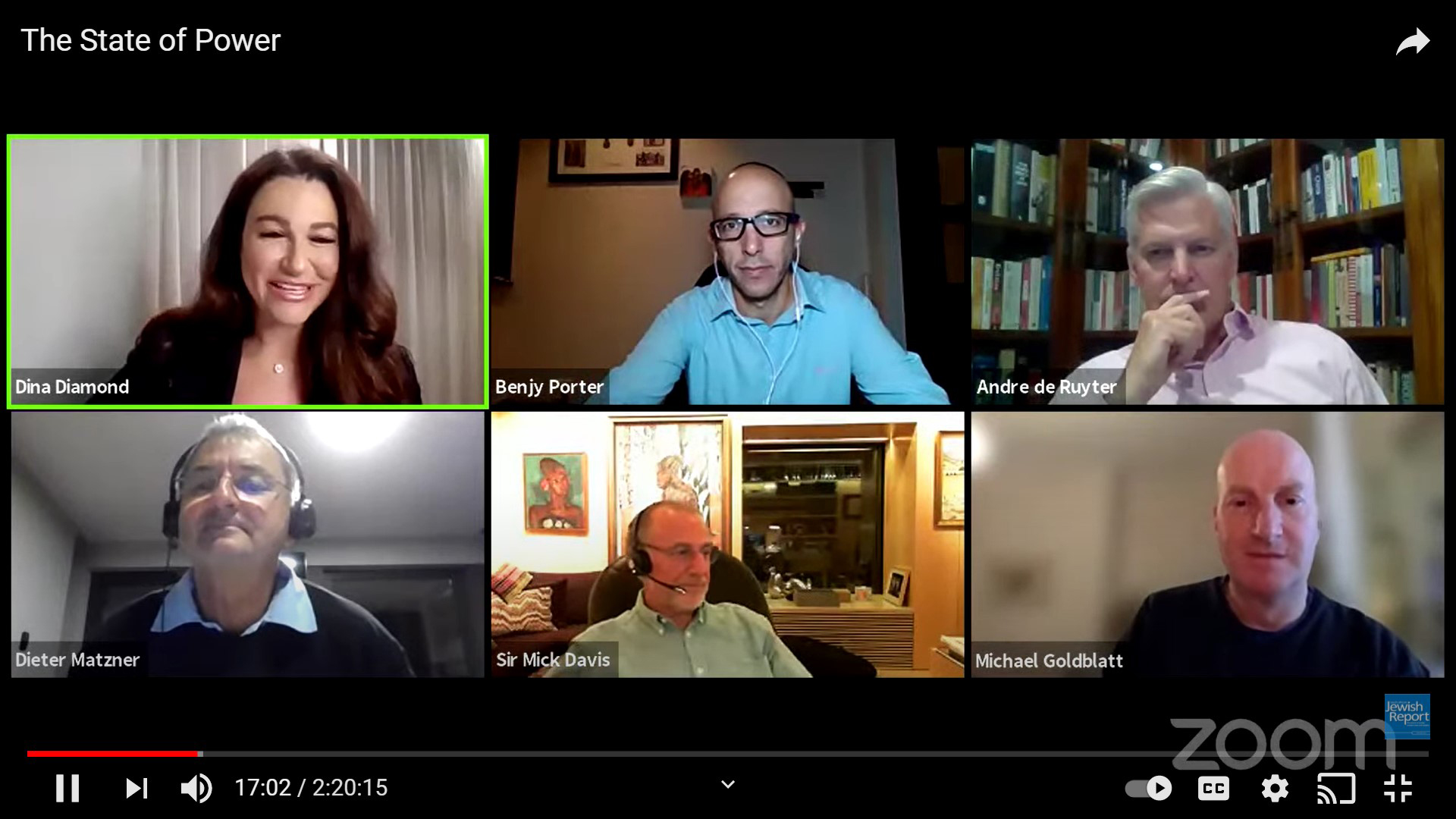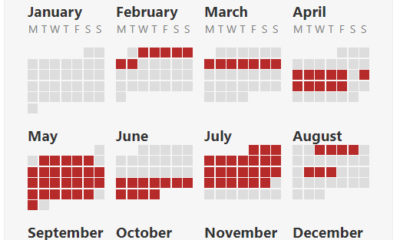
Featured Item

There’s light at end of Eskom tunnel
Published
3 years agoon
By
Jordan MosheEskom is making progress, though it may not be visible yet, Andre de Ruyter, Eskom’s group chief executive, told a SA Jewish Report webinar last Saturday night.
He said a great deal of work was being done behind the scenes to address 10 years of state capture, deliberate neglect, and ill-discipline, but all hands were on deck to turn the power utility around.
“Eskom has 12 key risks, and by March 2020, five of them had manifested,” he told the online audience. “We’re addressing issues we inherited and are trying to rebuild from the low base to which we’ve been worn down.”
In 2001, the utility was named power company of the year at the Financial Times Global Energy Awards in New York. Much has changed since then.
“State capture, corruption, self-enrichment, and neglect crept in. Good practice was deliberately neglected to create opportunity for looting,” De Ruyter said. “A lot of procurement was done on a free-text basis, typing any description in to push through an order.
“I caught an incident where someone was buying a mop with a wooden handle for R238 000. Fortunately, we could stop it, but systems have degenerated such that that was possible.”
However, he said in recent months, much had been done to root out corruption. The company reclaimed R1.1 billion in the time before he joined. Since he has come onboard, a further R177 million has been reclaimed, with further claims in the pipeline. Eskom has also launched action against the “dirty dozen” – former Eskom executives and others (including the Guptas) – aimed at recovering R3.8 billion.
“I know most of the money is safely hidden offshore and it’s unlikely we will recover it all,” De Ruyter said. “But you have to demonstrate that there are consequences. The wheels of our criminal justice system grind very slowly, but we must keep going after people with civil actions.”
Lower-level corruption is also being exposed, with lifestyle audits being ordered on suspected employees.
De Ruyter described the situation at the Kusile and Medupi power stations, saying that their problems could be traced back more than 27 years.
“The problem originated in 1993 when an energy white paper was published,” he said. “Eskom warned government that we were about to enter a shortage of capacity.
“That duly happened, and Mbeki was graceful enough to admit that the government was wrong and should have begun building capacity earlier.”
The construction of the two stations was also pursued in an uncoordinated fashion.
“At one time, we were building before designs were complete,” said De Ruyter. “The project management was inappropriate, and as a consequence, there were major challenges in design that slipped through.
“We have identified the defects and implemented fixes at five of six units at Medupi. It has taken us 72 days of outages per unit at Medupi to correct them at a cost of R300 million per unit.
“Eskom takes no pleasure in load shedding. This isn’t an easy fix,” De Ruyter said. “We are living with the consequences of the decisions taken more than 15 years ago, really poor management, and no maintenance over decades.”
A private investment opportunity aimed at increasing generation capacity will result in Eskom being restructured into three separate divisions – generation, transmission, and distribution. By the end of 2021, the transmission arm is expected to be set up as an independent buyer of electricity.
Eskom will also have to overcome its crippling debt, said De Ruyter.
“Eskom spends R32 billion in net finance cost, an enormous burden that is the legacy of mega projects that we undertook with no equity support,” he said. “We have consistently had below-cost-reflective tariff increases, so the debt mountain has become bigger.”
The newly adjusted tariffs have aroused the ire of those who want to go off grid and generate their own electricity, but De Ruyter stressed the necessity of the changes.
“The adjusted tariff reflects capacity and energy charge,” he said. “People install solar panels, but because it’s expensive to invest in full backup capacity, they install grid-linked systems. If the sun doesn’t shine and batteries run down, they want the luxury of tapping into Eskom’s system and accessing our electricity.
“They relieve the burden on the grid, but for Eskom to remain available as a proxy battery for when your battery runs down and not get compensated for the fixed cost we incur is incorrect. If you want to go off grid, we’re not stopping you, but we want to be compensated for allowing the backup facility option.”
De Ruyter stressed that the money Eskom receives from the treasury is used to pay interest not debt, which isn’t sustainable.
“We aren’t asking to be subsidised for our own inefficiencies,” he said. “Where our costs are high and headcount excessive, we accept that as our management challenges and will fix it. What we are saying is benchmark us on a global basis against reasonably efficient costs of generating electricity and compensate us for that.”
Beyond renewable sources of energy, De Ruyter said South Africans need to adopt an integrated approach moving forward.
“When people hear ‘load shedding’, they just think Eskom, but they should think where the policy is coming from in terms of the department of mineral resources and energy and the role of the National Energy Regulator of South Africa [NERSA],” he said. “We concluded an auction process to add short-term emergency power procurement to the grid, but NERSA decided not to allow it. We need to address the alignment issue, and address it quickly.”
Load shedding will remain an issue as long as maintenance is delayed, De Ruyter said.
“We’re maintaining two large power stations, and while we do it, it will increase the risk of shedding. The alternative is that the whole system crashes. We have taken an aggressive stance on maintenance, and the first step should be complete by April.
“The second round of units will then be taken offline and by September, we should have a substantial reduction in load shedding. Ultimately, it’s vital that we address capacity shortage.
“Load shedding risks remain as long as we don’t address capacity shortage,” De Ruyter said. “We’re willing to do what’s necessary to enable new capacity to come on the grid. Eskom was resistant to new capacity in the past, with projects failing as Eskom refused to sign. The country needs the extra capacity, and we’ll do what’s necessary to make it happen.”










